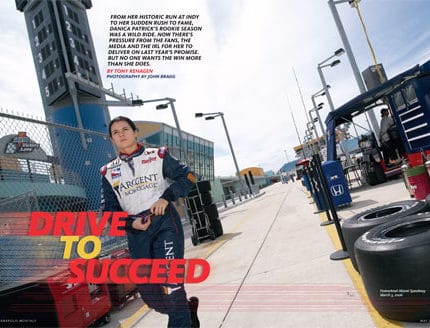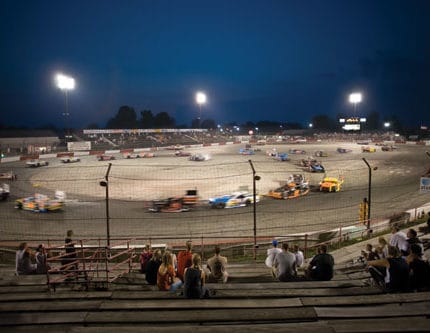Ask Me Anything: Jeff Gordon
The NASCAR champ will finish his career this year with more than 90 wins. Can he make it six Brickyards?

Editor’s Note, Feb. 19, 2013: This past Sunday at Daytona International Speedway, driver Danica Patrick became the first woman ever to qualify in the top spot for a NASCAR Cup race. She will start in the pole position of the Daytona 500 on Feb. 24. The following profile, noted in The Best American Sports Writing series, originally appeared in the May 2006 issue of IM, a year after Patrick’s fourth-place finish in the Indianapolis 500.

Dan Wheldon was going to save IndyCar. That was the premise with which I set out to write an early-season profile of the Brit in the spring of 2005. He was 26, dapper, handsome, and quotable in a sneering, “like-it-or-lump-it” attitude that seemed about as sincere as his insistence that he only drank Red Bull and Jim Beam, his sponsor. He was coming off his first full season, having won three races and finished second in points, and sitting at a table in the back of his trailer for an interview the night before the first race in Homestead, hair spiked stiff, slacks immaculately pressed. He flashed a snaggle-toothed grin and agreed that, “Yeah, a good piece is exactly what the sport needs,” to get fans on board.

Editor’s Note: Somehow, despite his hailing from England, the loss of Dan Wheldon has hit our community close to home. For years now, we have felt especially attached to him. There are the two 500 wins, certainly—including this past edition’s dramatic and improbable finish—but it was his warmth and humor that made him a favorite with fans and media alike. Once, in July 2007, he even invited us in to his home, letting us showcase his condo in our pages.
As a tribute to his all-too-short life, we offer our May 2005 profile, published in the same month he first won our race. Our thoughts and prayers go out to the IRL and to his family.

Five miles east of Monument Circle, on the far edge of Irvington, the railroad runs past factories and warehouses and a tiny asphalt racetrack. There is no infield, just a rubber-streaked oval two-tenths of a mile in circumference, little bigger than a hockey rink, surrounded by a wire fence and grandstands of bleachers and folding metal chairs. During the week, the Indianapolis Speedrome stands as empty as many of the abandoned buildings on the industrial east side. But every summer Saturday night, the place comes alive with beer-swilling fans who’ve paid $11 to watch four hours of action, semi-pro drivers trading paint in everything from go-karts to jalopies, all of it just prelude to the mayhem that is the main event, a little-known battle royale of bent metal that may just be auto racing’s truest spectacle: the Figure 8.

I can’t remember the last time I saw him. He was a fixture, a perennial, as much a sign of summer on the Circle as the lunchtime picnickers on the Monument steps, his slightly-out-of-tune guitar and deep baritone harmonizing with the background din of traffic and construction and rushing water fountains. And then he was gone.